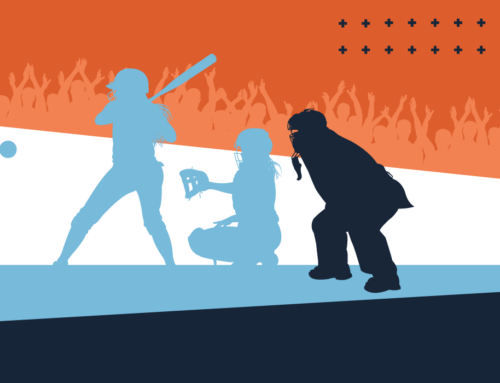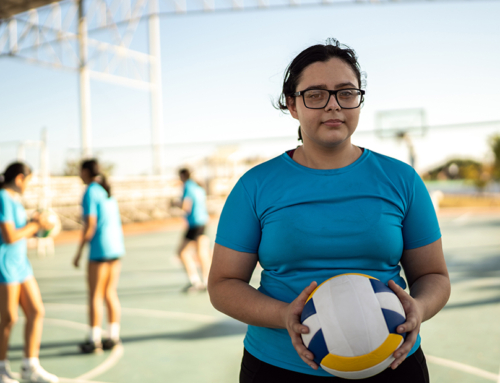Dear Parents,
You are my teammate.
I believe you and I both play a pivotal role in helping your kid develop a positive relationship with training and all the wonderful physical, mental, social and emotional benefits that come with it. I believe we both want their development as a young adult to come first, and their development as an athlete to come second.
If I constantly undermine you and you constantly undermine me, it will only create confusion for your child.
This message is meant to help you understand my perspective as a performance coach who’s worked with thousands of young athletes. I believe if we’re able to get on the same page about a few things, the payoff for your child will be tremendous.
I’m sure there may be more things coaches out there would like to tell you, but I want to get to the heart of it. These pillars are why I train young athletes they way I do.
1. Strength Training is a Necessity
All athletes need to strength train.
How that strength training looks will differ based on the individual and the coach, but strength training is a necessity. When done appropriately under a qualified coach, it is nothing but beneficial to their physical capabilities and their self confidence.
Especially in youth athletics, an appropriate strength training program is huge for their long-term athletic development.
Children today are not exposed to as many challenges that help them develop relative strength, or how strong they are relative to their size.
This is not an article on the state of strength in our society, but regardless, it’s true. Gym classes are becoming optional, playgrounds are becoming obsolete, and many of today’s fitness “tests” don’t measure any qualities we would consider to be of great use.
Strength is the base of the pyramid when it comes to long-term development and a prerequisite to other athletic qualities such as speed, power and coordination.
A 2016 review published in the journal Sports Medicine states that,“greater muscular strength is strongly associated with improved force-time characteristics that contribute to an athlete’s overall performance. Much research supports the notion that greater muscular strength can enhance the ability to perform general sport skills such as jumping, sprinting and change-of-direction tasks. Further research indicates that stronger athletes produce superior performances during sport-specific tasks. Greater muscular strength allows an individual to potentiate earlier and to a greater extent, but also decreases the risk of injury.”
You may think your child is strong enough or doesn’t need strength. Rather, they just need to get quicker or develop better first-step acceleration.
An underlying base of strength is needed to achieve those goals. Power is the ability for you to express your strength as fast as possible.
You may believe your child is too young to participate in a strength training program, and depending on your definition of a “strength training program,” you could be absolutely right.
This is why I don’t approach strength training with every athlete the same way.
A high school freshman doesn’t need to follow a Division 1 college football summer weight training program. Middle schoolers will benefit greatly from basic bodyweight movements like Squats, Inverted Rows and Push-Ups, along with additional basic patterns such as throwing, jumping, carrying, etc.
When done under the guidance of a qualified professional, strength training is far less dangerous than every popular team sport.
2. Patience Is Required and Rewarded
This may be the toughest thing for your child to understand about the training process, but training-induced adaptations in the body take time.
Individuals completely new to training will see fast results during their first few months, but those “newbie gains” will eventually begin to reduce and the improvement won’t come as rapidly.
This is when setting goals becomes critical. You’re likely no longer PR’ing every workout, so you need some more long-term goals.
It’s key for you, your child and your coach to sit down and discuss manageable yet challenging goals.
Setting unrealistic goals does the child little good, and it can make them feel like all their hard work was for nothing if they don’t achieve them.
The goals should be something that you, the coach, and most importantly, the child, all can agree upon.
These goals should be measurable, and there should be a reasonable timeline set for their achievement. This creates a commitment from the child, gives the coach a better idea of how they can organize their training, and encourages patience from the parent.
Once this deadline comes around, there can be another conversation with the coach, parent and child to discuss how they improved, what goals were met, and what the next steps should look like.
We understand there will be times of the year where an athlete may not be as involved in training due to their sports season, a family vacation or various other factors. This is perfectly OK, and even encouraged. The last thing we want is your child to burn out.
However, knowing when these periods might come up helps us organize your child’s training and shape their expectations.
I also want to celebrate the small victories. When both the parent and coach point out signs of progress to the child, they gain confidence and buy-in. Hopefully, this won’t only make their training more enjoyable and effective in the near-term, but it will also foster a healthy relationship with physical activity.
Embrace the journey.
3. Your Child’s Training Needs Aren’t All That Unique
If patience is toughest for the child to understand, this one’s toughest for the parents to understand.
I’m not saying your child isn’t special or unique.
Of course they are. Every kid is different.
But in the world of athletic training, we need to build a general base of athletic qualities before we narrow our focus.
A pyramid is only as tall as its foundation is wide. Building this foundation is achieved by checking each movement pattern listed below with exercises or drills that are appropriate for them:
- Press
- Row
- Squat
- Hinge
- Carry
- Throw
- Jump
- Sprint
- Bodyweight movements such as crawls, calisthenics, etc.
If your child gets great at performing one movement from each of those categories and progresses accordingly, we are well on our way to building a strong athletic foundation.
Not only will this serve them well in the moment, but it will position them infinitely better down the line. If they’ve established a strong foundation, they’ll be far better equipped to tackle more advanced training methods as they get older.
When I train athletes, I want to be confident that what we’re doing isn’t only making them better today, but also setting them up for long-term success and big future goals.
If parent, child and coach can find common ground on these three points, you’ll build the foundation of a tremendous relationship that’s beneficial for all.
Original article posted on stack.com
READ MORE:



